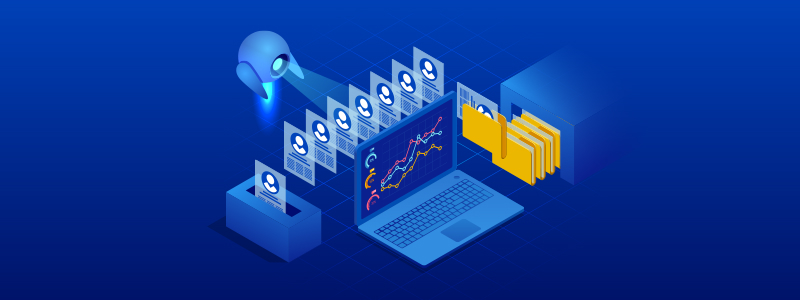
A Complete Guide to the Different Types of APIs
Although, APIs have a recent history, they have penetrated the digital ecosystem so quickly that everything today is dependent on them. From web development to mobile applications, APIs have become the building blocks of the digital world.
Over the years, APIs have evolved significantly so today there are various types of APIs, each with its own purpose. Moreover, APIs are not only categorized based on their architecture but also based on their access policies. Therefore, it is crucial to understand the different nature of these APIs.
If you’re confused about which API to use and when, this guide will help clear the confusion and will help you choose the right one! Let’s dive straight in.
What are The Different Types of APIs?
There are four main types of APIs:
- Public APIs
- Internal APIs
- Partner APIs
- Composite APIs
Public APIs
Public APIs, also known as external or open APIs, are APIs made available to developers, businesses, and the public by companies, organizations, or platforms. These APIs provide access to certain functionalities or data that the API provider exposes to external users or third-party developers. You can access these APIs via a form of authentication – usually an API key.
Some public APIs are free while others require a payment based on the number of times the API is called. An example of a paid public API is the Google Translate API, which costs $20 for every 1 million characters translated.
Internal APIs
Internal APIs, also called private APIs or in-house APIs, are developed to be used within an organization. These APIs serve as the communication bridge between different components, services, or applications within a company and are not intended for external access or use by third parties.
While internal APIs are flexible in their documentation and naming conventions, as they usually don’t follow the OpenAPI standard they are generally less secure than other types of APIs.
Partner APIs
Partner APIs are also called external APIs. These APIs facilitate communication and data exchange between different businesses, organizations, or entities and enable controlled access to certain functionalities, services, or data between partnering companies.
Imagine a partnership between a cloud-based accounting software and a payment processing company. A partnership API allows the software to integrate with the payment processor’s services. The payment company provides the API to multiple companies in this way.
Composite APIs
Composite APIs allow you to execute multiple API requests into a single call. So, in short you can perform complex operations with a single call, reducing the number of round trips to the server and improving performance. Composite APIs are particularly useful for scenarios where multiple API calls are tightly related and need to be executed in a specific sequence.
Think of an e-commerce website. There are multiple steps to making a purchase:
- Search for a product.
- Click on the result.
- Add to cart.
- Checkout.
Rather than execute each call separately, it is more efficient to combine and execute them at once.
API Protocols
An API protocol refers to the set of rules, standards, and conventions through which communication occurs between different software components or systems. It outlines the structure and methods by which applications or services can interact and exchange data.
It’s important to understand the different types of protocols as the way you create and manage your APIs is influenced by the protocol you use.
The common API protocols are:
- REST
- SOAP
- GraphQL
- RPC
REST APIs
The full form of REST is Representational State Transfer. REST APIs use HTTP requests (GET, POST, PUT, DELETE) to interact with resources (data) via URIs. They follow stateless communication and generally use the XML format for data exchange.
REST APIs are defined by:
- Resource-oriented: REST APIs treat data as resources, each with a unique identifier (URI or URL).
- Client-server architecture: REST APIs separate the client (application) from the server (API provider), allowing for independent development and deployment.
- Stateless: REST API interactions are stateless, meaning each request contains all the necessary information to be processed independently.
- Cacheable: Responses can be cached to improve performance and reduce server load.
When to use them: RESTful APIs are best suited for scenarios that require scalability, simplicity, and interoperability. They work well for web and mobile applications, where flexibility in data retrieval and ease of use are essential. Use them for CRUD operations (Create, Read, Update, Delete) on resources and when working in a distributed system environment.

(Source: Seobility)
SOAP APIs
SOAP stands for Simple Object Access Protocol. These APIs use standardized XML for message formatting and typically operate over HTTP, TCP, SMTP, and other protocols. They employ a strict messaging format, including WSDL for defining the service interface.
A SOAP API consists of the following components:
- SOAP Envelope: The outer layer of the SOAP message, containing the header and body sections.
- SOAP Header: Optional section that provides additional information about the message, such as routing or security information.
- SOAP Body: Mandatory section that contains the actual data being exchanged.
- SOAP Operation: A specific action that the API can perform, such as creating, retrieving, updating, or deleting data.
When to Use: SOAP APIs are beneficial for complex enterprise-level applications that demand strong security measures, ACID transactions, and error handling. They’re suitable for scenarios where standards compliance and built-in mechanisms for data integrity and security are critical, such as financial transactions. They’re also protocol independent, unlike REST.
Read more about SOAP APIs and how they compare to REST.
GraphQL APIs
GraphQL is not actually an API protocol rather it is a query language and runtime for APIs. It allows clients to request specific data structures using HTTP requests. GraphQL APIs use a single endpoint and a flexible query language with unlimited data schemas. Unlike REST APIs, which require multiple round trips to fetch the desired data from different endpoints, GraphQL allows clients to specify the exact data they need in a single request.
With GraphQL, clients can specify the shape and structure of the data they require using a query, and the server responds with JSON data that matches the query, which help reduce over-fetching and under-fetching.
When to Use: GraphQL is ideal when there’s a need for optimized data fetching tailored to client requirements. It suits scenarios where clients demand flexibility in data retrieval, such as in mobile applications or when dealing with complex data structures.
RPC APIs
RPC stands for Remote Procedure Call, and RPC APIs facilitate communication between different processes by allowing one program to execute procedures on another system. RPC protocol return a method instead of a resource. For example, an RPC protocol might return a server confirmation or an error, while a REST protocol might give a text document.
There are various implementations of RPC, such as gRPC, XML-RPC, and JSON-RPC. Each has its own protocols and methodologies for handling remote procedure calls. These APIs are commonly used in building distributed systems, client-server architectures, and other scenarios where different components need to communicate over a network.
When to use: RPC APIs are useful where developers need to invoke functions or procedures on remote servers. They are a suitable option for lightweight data packs and basic requests.
Now that you understand the different API types, let’s look at more examples of APIs around us.
APIs are All Around Us
The digital world is filled with APIs of different types. They act as bridges between applications, allowing them to exchange data. Here are some examples of APIs commonly used in various aspects of our lives:
Weather APIs: These APIs provide real-time and historical weather data, including temperature, precipitation, forecasts, and weather alerts. They are used by weather apps, news websites, and smart home devices to keep us informed about weather conditions.
Maps and Navigation APIs: These APIs provide maps, directions, and traffic information, enabling navigation apps and location-based services. Google Maps and Apple Maps fall in this category.
Social Media APIs: Social media platforms like Facebook, Twitter, and Instagram expose APIs that allow developers to integrate social media features into their applications. This enables sharing content, accessing user profiles, and managing social interactions.
Payment APIs: APIs like PayPal, Stripe, and Square facilitate online and mobile payments. This allows merchants to accept payments securely and integrate payment processing into their websites or apps.
E-commerce APIs: These APIs provide the building blocks for e-commerce platforms, like Amazon and eBay, enabling product catalog management, order processing, inventory tracking, and customer relationship management.
Communication APIs: APIs like Twilio and Plivo enable developers to integrate SMS, voice, and messaging functionality into their applications, allowing for real-time communication and notifications.
Machine Learning APIs: APIs like Google Cloud AI, Amazon Rekognition, and Microsoft Azure Cognitive Services provide machine learning capabilities for tasks like image recognition, natural language processing, and sentiment analysis.
Open Data APIs: Governments and organizations around the world publish open data APIs that provide access to public datasets, enabling developers to create data-driven applications and visualizations.
Choosing the Right API – Factors to Consider
The type of API you choose will depend on your particular use case. However, there are certain universal principles that you need to keep in mind while picking an API such as:
Documentation: Solid documentation is a big plus for both users and developers as it helps developers implement APIs efficiently and successfully. SOAP APIs have a strict set of rules, while REST are more flexible.
Security: APIs should use robust encryption and authorization standards, such as OAuth 2 and SSL, to protect sensitive data. Some APIs, like RPC, are less secure than others and are only suitable for internal use. SOAP APIs provide better security.
Ease of use and developer familiarity: APIs should be easy to use. Your developers should also be familiar with the chosen protocol as it simplifies development. REST is a good option as it is the most widely used protocol.
API adoption: A good API is easy to acquire. The signup process should be simple with robust authentication. Another aspect of ensuring easy adoption is good chat and live support. This isn’t limited to the sign up – good support also extends to debugging errors. REST APIs are popular for being very user-friendly, being widely used in web services.
Scalability: Consider the expected usage volume and traffic patterns of your API. If you anticipate high traffic or frequent requests, opt for a protocol that can handle large amounts of data efficiently. REST APIs are highly scalable, and a good option.
Vendor ecosystem: Third party support is also important. Evaluate the vendor ecosystem surrounding the protocol, including the availability of third-party tools, libraries, and management platforms.
Improve Your Knowledge of APIs
This blog is just an introduction to some of the various types of APIs. Each API type is very complex and interesting and should be studied thoroughly. Now that you have a basic understanding, you can go ahead and learn more about each individual type in more detail.
Check out our other API blogs for a more in-depth exploration:
Want to build robust APIs in a code-free environment? Check out our guide to creating APIs.
Learn more about Astera’s API solution. Astera enables teams to easily and securely create, publish, and monitor APIs in a no-code way, simplifying the entire API management cycle.
 Astera AI Agent Builder - First Look Coming Soon!
Astera AI Agent Builder - First Look Coming Soon!


